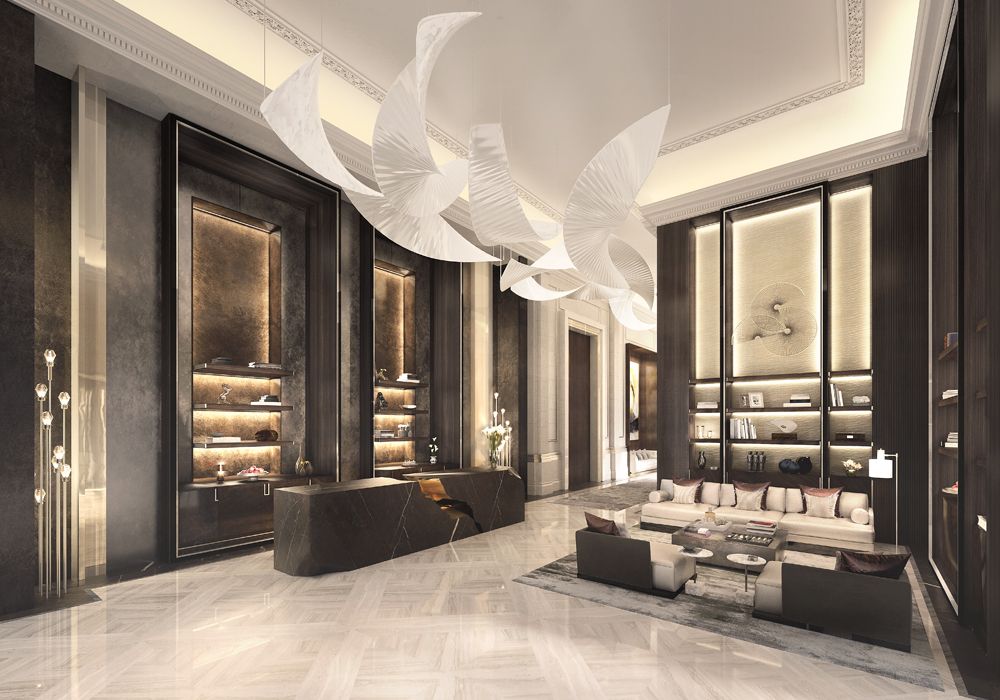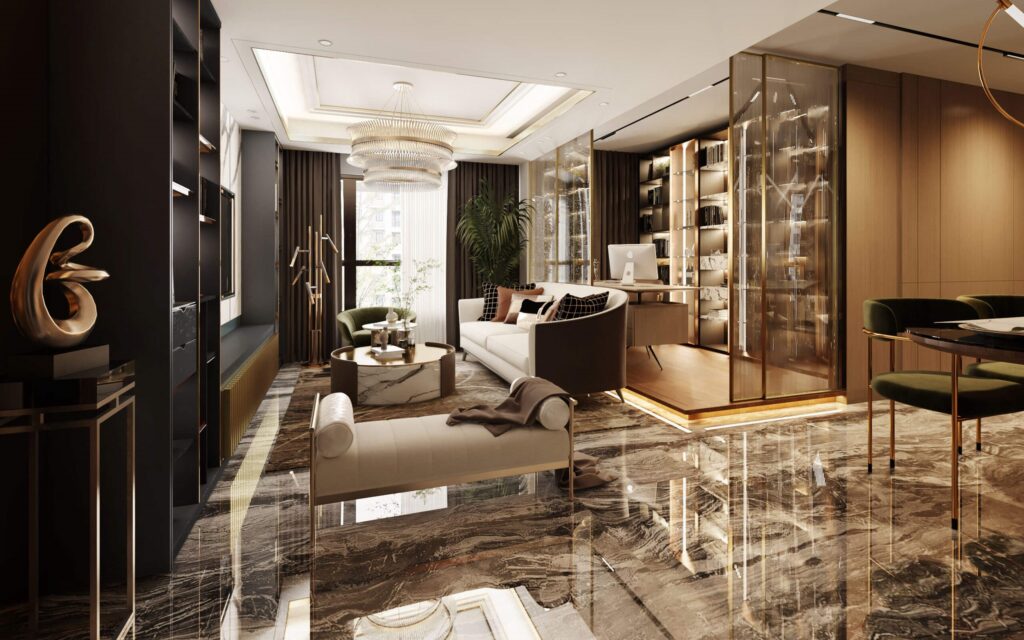Introduction
Art Deco, a design movement that originated in the early 20th century, is experiencing a significant resurgence in modern interior design. Known for its glamorous, opulent style, geometric shapes, and luxurious materials, Art Deco emerged during a period of rapid social and technological change. While its popularity waned after World War II, the movement has seen a revival in recent years as designers and homeowners seek a sense of nostalgia, elegance, and sophistication. This article delves into the reasons behind the revival of Art Deco in contemporary interiors, explores key design elements, and examines iconic examples of Art Deco-inspired interiors in modern design.
The History of Art Deco
Art Deco emerged in the 1920s and 1930s, initially in France, and quickly spread to other parts of the world, including the United States, Europe, and South America. The style was a response to the ornate and overly decorative designs of the Victorian and Edwardian eras, offering a sleek, modern aesthetic that embraced new materials and technologies.
Key characteristics of Art Deco include:
- Geometric Shapes: Art Deco interiors feature bold geometric patterns, such as zigzags, chevrons, and fluted designs. These shapes often appear in furniture, textiles, wallpaper, and flooring.
- Luxurious Materials: The use of luxurious materials, such as lacquer, chrome, glass, marble, and exotic woods, was a hallmark of the Art Deco style. These materials were chosen for their high-end appeal and ability to create a sense of opulence and glamour.
- Streamlined Forms: Unlike the highly ornamental styles that preceded it, Art Deco embraced clean, streamlined forms with an emphasis on symmetry and balance.
- Bold Colors and Metallic Finishes: The use of vibrant colors, such as emerald green, deep blue, and rich gold, as well as metallic accents like gold, silver, and chrome, was prevalent in Art Deco interiors.
Why Art Deco is Making a Comeback
The revival of Art Deco in modern interior design can be attributed to several factors, including:
- Nostalgia and Glamour: Art Deco’s glamorous, opulent aesthetic evokes a sense of nostalgia for the early 20th century, a time of social and cultural innovation. As modern life becomes increasingly fast-paced and digital, people are drawn to the elegance and timeless beauty of Art Deco.
- Interest in Historic Design Movements: Many designers today are looking back to historical design movements for inspiration. Art Deco’s blend of luxury, craftsmanship, and modernism makes it particularly appealing in the context of today’s design trends.
- The Return of Luxury: As people seek to invest in high-quality, enduring pieces for their homes, Art Deco’s emphasis on luxurious materials and craftsmanship aligns with the growing desire for products that offer both beauty and longevity.

Key Elements of Art Deco in Modern Interiors
- Geometric Patterns and Bold Lines The use of geometric shapes and bold, angular lines is one of the most defining features of Art Deco design. Whether it’s in furniture, flooring, or wall decor, geometric patterns add a sense of dynamism and structure to a space.
- Chevrons, Zigzags, and Stripes: These patterns can be incorporated into rugs, textiles, wallpaper, and even wall paneling to evoke the energy of the Art Deco era.
- Symmetry: Art Deco interiors are characterized by a balanced, symmetrical arrangement of elements, contributing to a sense of order and harmony in the space.
- Luxurious Materials Art Deco interiors make use of materials that are visually striking and have a sense of luxury. Some of the most common materials include:
- Marble: Marble is often used for floors, countertops, and accent walls, creating a sense of grandeur.
- Lacquer and Polished Wood: High-gloss lacquered finishes and exotic woods, such as ebony and rosewood, were used in Art Deco furniture and cabinetry.
- Metallic Accents: Gold, silver, and chrome are frequently used in detailing, furniture hardware, and light fixtures, adding a touch of glamour to the space.
- Color Palette Art Deco interiors often feature rich, bold colors paired with metallic finishes. Common color choices include:
- Deep Hues: Shades like emerald green, royal blue, ruby red, and black are frequently used for walls, upholstery, and accessories.
- Metallic Tones: Gold, silver, and brass are prominent in finishes, lighting, and decorative accents, contributing to the luxurious feel of the style.
- Contrasting Combinations: Art Deco often pairs contrasting colors, such as black and gold, or deep blue and white, creating visually striking and balanced compositions.
- Statement Furniture and Lighting Furniture and lighting fixtures are key components of Art Deco interiors. Art Deco furniture tends to be bold and sculptural, with geometric shapes and luxurious finishes.
- Sculptural Furniture: Pieces such as chairs, tables, and cabinets feature strong lines and geometric designs. Materials like lacquered wood, glass, and metals are combined to create sophisticated, high-impact furniture.
- Statement Lighting: Art Deco lighting often features intricate details, with glass, chrome, and geometric shapes. Chandeliers, sconces, and pendant lights with geometric motifs are common in Art Deco-inspired spaces.
Iconic Examples of Art Deco in Modern Interiors
Several contemporary interior designs have successfully integrated Art Deco elements, proving that this style is just as relevant today as it was nearly a century ago.
- The Waldorf Astoria New York: Recently renovated, the Waldorf Astoria’s interiors showcase the timeless beauty of Art Deco, with rich materials, bold geometric designs, and metallic accents throughout the hotel’s lobby, dining rooms, and private suites.
- The Ritz-Carlton in Miami: This luxury hotel embraces Art Deco with its combination of streamlined forms, polished marble, and decadent colors like gold and deep blue. Its contemporary interpretation of Art Deco evokes the glamour of the 1920s while offering modern comforts.
- Private Residences: Many modern homeowners are adopting Art Deco elements in their interiors, particularly in urban environments. From luxe penthouses to modern apartments, the style’s geometric patterns and luxurious materials are used to create chic, sophisticated living spaces.

Conclusion
The revival of Art Deco in modern interior design brings together the glamour, elegance, and sophistication of the past with the needs and tastes of today’s consumers. With its emphasis on bold geometric patterns, luxurious materials, and opulent finishes, Art Deco offers a timeless aesthetic that resonates with those seeking beauty, craftsmanship, and luxury. Whether in residential or commercial spaces, Art Deco’s resurgence reflects a renewed appreciation for quality design and the enduring power of classic styles.
